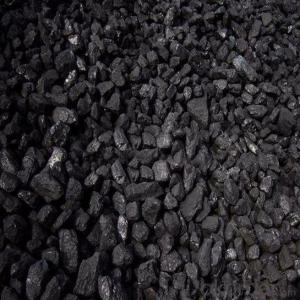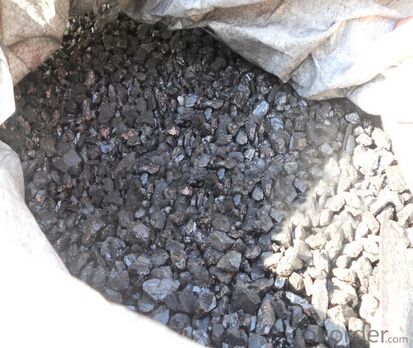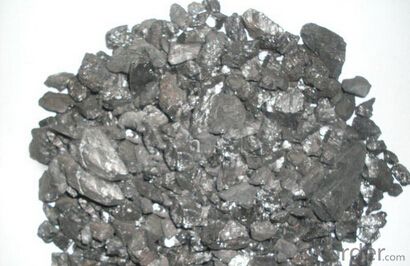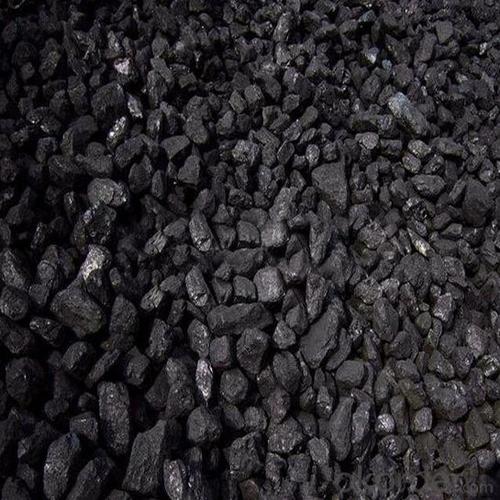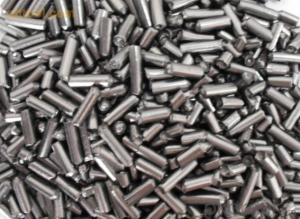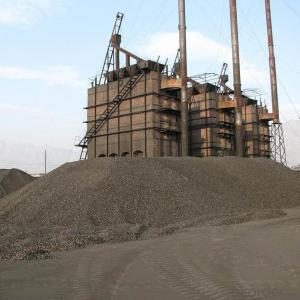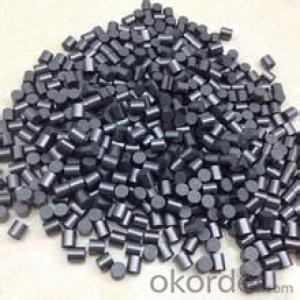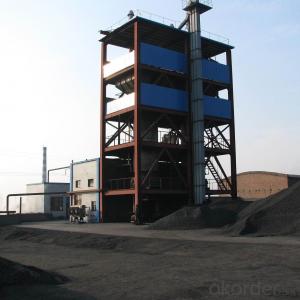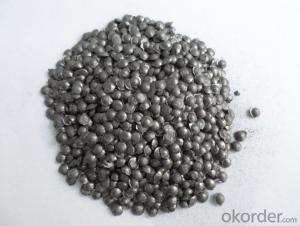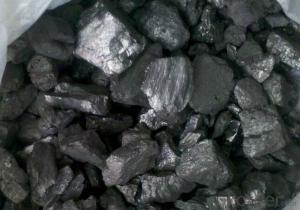Recarburizer for steelmaking High Carbon Low Sulphur For Metals Casting
- Loading Port:
- Dalian
- Payment Terms:
- TT OR LC
- Min Order Qty:
- 10 m.t
- Supply Capability:
- 500000 m.t/month
OKorder Service Pledge
Quality Product, Order Online Tracking, Timely Delivery
OKorder Financial Service
Credit Rating, Credit Services, Credit Purchasing
You Might Also Like
Specifications of Recarburizer for Steelmaking:
As an ideal carbon additive and intermediate reactor
it has been widely used in different indust
Recarburizer for steelmaking
- F.C.: 90%min
ASH: 8%max
V.M.: 2%max
S: 0.5%max
MOI: 1%max
- F.C.: 93%min
ASH: 6%max
V.M.: 1%max
S: 0.5%max
MOI: 1%max
- F.C.: 95%min
ASH: 4%max
V.M.: 1%max
S: 0.5%max
MOI: 1%max
We also can supply the size is as customers' requirements.
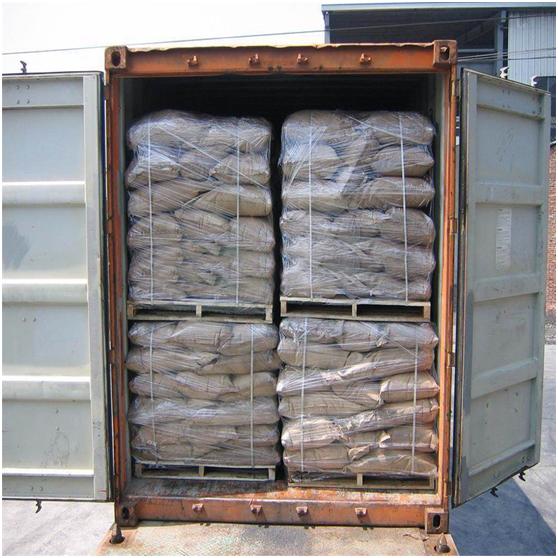
- Q: Is carbon a conductor?
- It depends on what kind of material, the cartridge is the conductor, and the coal is not the conductor
- Q: What is electrical carbon?
- Different uses have different varieties, according to the use of electric carbon varieties can be divided into:(1) sliding contact carbon brushes and carbon sliders for all kinds of motor brushes.(2) various carbon and graphite contacts used in high power switches, relays, etc..(3) with various carbon arc lighting, carbon arc gouging, spectral analysis and arc furnace.(4) all kinds of high purity graphite electrodes, insulation and supporting elements for electric vacuum devices.(5) various electrodes used in dry cells and electrolytic cells.(6) the resistance effect of carbon. Made of various resistance, post, communication with the microphone carbon sand, resistance heating elements etc..
- Q: What is carbon black ink?
- Carbon black ink is a type of ink that is made by dispersing carbon black pigment in a liquid medium. It is commonly used in printing and writing applications due to its deep black color and high opacity.
- Q: Why is the longer the carbon chain, the better the hydrophobic properties?
- Alkyl chains, low in polarity, insoluble in water...... Release53 (TA station) of all alkanes alkane chain containing even chemical bonds are sigma bond, charge distribution in the molecule is not very uniform, the movement process can produce instantaneous dipole moment, but the total dipole moment is zero, non polar molecules. According to the similarity principle of compatibility, alkane in general can only be dissolved in carbon tetrachloride, like hydrocarbons and other non polar solvent, so the more you long alkane chain, as hydrophobic groups, then you must material hydrophobicity and better advice and look at textbooks still need some basic theory of organic.
- Q: What are the consequences of increased carbon emissions on human health?
- Human health is significantly affected by the increase in carbon emissions. One immediate consequence is the decline in air quality. Harmful air pollutants, like particulate matter, nitrogen oxides, and ground-level ozone, are formed due to carbon emissions. These pollutants can lead to respiratory problems, such as asthma, bronchitis, and other chronic obstructive pulmonary diseases. They can also worsen existing respiratory conditions, resulting in more hospitalizations and premature deaths. Moreover, carbon emissions contribute to climate change, which has extensive effects on human health. Rising temperatures can worsen the frequency and intensity of heatwaves, causing heat-related illnesses and deaths. Vulnerable populations, such as the elderly, children, and those with pre-existing health conditions, are particularly affected by heat stress. Climate change also influences the spread of infectious diseases. Changes in temperature and rainfall patterns can alter the behavior and distribution of disease-carrying vectors like mosquitoes and ticks. This can increase the transmission of vector-borne diseases, including malaria, dengue fever, and Lyme disease. Additionally, climate change can disrupt food and water supplies, leading to malnutrition and an elevated risk of waterborne diseases. Another consequence of carbon emissions is the increased occurrence of natural disasters, like hurricanes, floods, and wildfires. These events can cause physical injuries, displacement, and mental health issues, such as post-traumatic stress disorder. The destruction of healthcare infrastructure during disasters further hampers access to necessary medical care, aggravating health problems. It is important to note that vulnerable populations, such as low-income communities, indigenous communities, and developing countries, are disproportionately affected by the health impacts of increased carbon emissions. These groups often face limited access to healthcare, making them more susceptible to the consequences. In conclusion, the effects of increased carbon emissions on human health are severe. From the deterioration of air quality to the spread of infectious diseases and the occurrence of natural disasters, the impacts are extensive and pose significant risks to individuals and communities. It is crucial to mitigate carbon emissions and invest in sustainable practices to protect human health and establish a healthier and more sustainable future.
- Q: What are the environmental impacts of carbon emissions from industries?
- The environmental impacts of carbon emissions from industries are significant and wide-ranging. Firstly, carbon emissions contribute to the greenhouse effect, which leads to global warming and climate change. The excessive release of carbon dioxide and other greenhouse gases into the atmosphere traps heat, causing the Earth's temperature to rise. This has resulted in the melting of polar ice caps, rising sea levels, and extreme weather events such as hurricanes and droughts. These changes disrupt ecosystems, lead to the loss of biodiversity, and threaten the survival of numerous species. Secondly, carbon emissions contribute to air pollution. Industries release not only carbon dioxide but also other harmful pollutants such as sulfur dioxide, nitrogen oxides, and particulate matter. These pollutants can have detrimental effects on human health, causing respiratory problems, cardiovascular diseases, and even premature death. In addition, they contribute to the formation of smog and acid rain, which further damage ecosystems and harm plant and animal life. Moreover, carbon emissions from industries have a negative impact on water systems. When carbon dioxide dissolves in water, it forms carbonic acid, leading to a decrease in pH levels and making the water more acidic. This acidification harms marine life, particularly organisms with shells or skeletons made of calcium carbonate, such as coral reefs, shellfish, and plankton. The disruption of marine ecosystems can have cascading effects on other species and disrupt the food chain. Lastly, carbon emissions contribute to deforestation and habitat destruction. Industries often rely on fossil fuels for energy, which leads to the clearing of forests to make way for mining or drilling operations. This destruction of natural habitats not only reduces biodiversity but also releases stored carbon from trees into the atmosphere, exacerbating the carbon emissions problem. To mitigate these environmental impacts, industries must prioritize the reduction of carbon emissions. This can be achieved through adopting cleaner and more sustainable energy sources, implementing energy-efficient technologies, and implementing stricter regulations and policies. Transitioning to renewable energy, improving industrial processes, and investing in carbon capture and storage technologies are essential steps towards mitigating the environmental impacts of carbon emissions from industries.
- Q: Advantages of carbon fiber
- Carbon fiber has excellent properties of elemental carbon, such as small proportion, excellent heat resistance, small thermal expansion coefficient, high thermal conductivity, good corrosion resistance and good conductivity. At the same time, it has a kind of fiber like flexibility, which can be woven and wrapped. The best performance of carbon fiber is that the specific strength and specific modulus are more than that of general reinforcement fiber.
- Q: How many electrons does carbon have?
- Carbon has six electrons.
- Q: What's the difference between an alkaline cell and a carbon cell?
- Carbon batteries and alkaline batteries are dry cells, but only in accordance with the quality of different materials and divided into two categories:2. The battery should be full carbon carbon zinc batteries (because it is the general level is the carbon rod electrode is the zinc skin), also known as zinc manganese battery, is currently the most common dry battery, it has the characteristics of low price and safe and reliable use, based on the consideration of environmental factors, because the ingredients still contain cadmium. It must be recovered, so as to avoid damage to the environment of the earth. (so we usually use the carbon rod, the negative electrode is zinc skin, the battery should be recycled)
- Q: when to use hard carbon, and when to use soft carbon. Neutral charcoal can play what role? Thank you.
- The soft carbon strokes are more black and easier to use. The hard charcoal painted gray, the color is not deep, when painting and sketch paper friction is relatively large, there is a general feeling of rustling, veteran can feel it.Soft charcoal most used in a black or a black screen most places, such as shadow, Terminator...
Send your message to us
Recarburizer for steelmaking High Carbon Low Sulphur For Metals Casting
- Loading Port:
- Dalian
- Payment Terms:
- TT OR LC
- Min Order Qty:
- 10 m.t
- Supply Capability:
- 500000 m.t/month
OKorder Service Pledge
Quality Product, Order Online Tracking, Timely Delivery
OKorder Financial Service
Credit Rating, Credit Services, Credit Purchasing
Similar products
Hot products
Hot Searches
Related keywords


